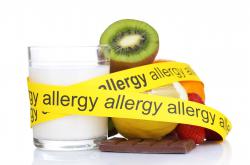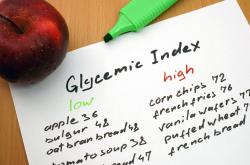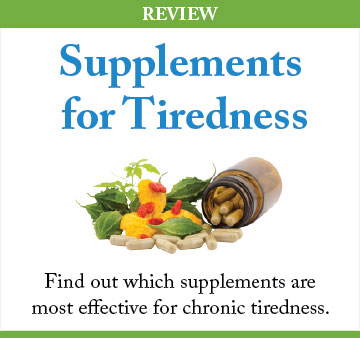Learn Which Toxins May Be Causing Your Tiredness
We are exposed to many sources of toxic substances that can accumulate in our body and strain our organs and immune system. These toxins can make you feel chronically tired and cause a range of medical conditions.
The effect of stress on our body goes beyond feeling tired. If we are persistently under severe stress, we are in danger of developing chronic, debilitating and life-threatening diseases. Unfortunately, we are exposed to stressors daily without knowing it. We may be feeling well but are actually under attack from invisible, yet deadly stress inducers. Called environmental stressors, they include toxic substances that go into our body in ways that we may not be aware of.
You'd probably be surprised to learn that sixty to one hundred different toxins can be trapped in our bodies. Perhaps even more shocking is the fact that we do not need to be at an industrial, chemical or nuclear factory to catch these toxins. Toxic substances are present in our food, water, air and every corner of our homes. That means we are regularly exposed to environmental toxins.
Over time these toxins can throw our biochemistry into disarray, setting the stage for a range of medical problems including chronic fatigue, autoimmune diseases and allergies, cancers, and neurological disorders. The U.S. Centers for Disease Control estimates that 80% of illnesses are due to environmental and lifestyle factors. Researchers list the following as common sources of toxins: junk foods, genetically modified foods, irradiated foods, and household products.
1. Junk Foods
When we talk about the link between lifestyle and disease, our eating habits emerge as an important variable. If junk foods are a regular part of our diet, then we are in effect ingesting chemicals, poisons and toxins that can have damaging effects on our health.
Besides sugar, which fuel our cravings for sweet and salty treats, also present in many junk foods are damaged fats, pesticides and toxic chemicals. They come in the form of additives and preservatives that are added to food in order to enhance flavor and extend shelf-life.
There is a long list of food additives and preservatives that can interfere with our biochemistry. Monosodium glutamate (MSG), sodium benzoate, propylene glycol, potassium bromate, red dye no. 2, lindane, carrageenan, BHA, BHC, BHT and DHA are just a few examples. Aspartame, acesulfame-K, sucralose, saccharin, nitrates and nitrites are also on the list.
Although preservatives and additives make food taste and look mouthwatering, their harmful effects cannot be ignored.
MSG
Monosodium glutamate is a popular flavor enhancer. A white, odorless crystalline compound and frequently used in Chinese dishes, MSG, if ingested in large amounts, can cause dizziness and headaches, chest pain, facial pressure, and tingling and burning sensations of the skin. Together these symptoms are called Chinese restaurant syndrome. Other conditions linked to MSG are asthma, palpitations, skin rashes and severe depression.
Chances are you are unaware that MSG is in the food you eat because that information is not required by the U.S. Food and Drug Administration (FDA) to be placed on food labels unless the manufacturer used 99% pure MSG. But if you are currently rethinking your diet, it would help to know that many food products in supermarkets today contain small amounts of MSG. They include bread, processed meats, frozen yogurt, ice cream, frozen entrees, canned tuna, salad dressings and soup.
Artificial Sweeteners
Aspartame, acesulfame, sucralose and saccharin are considered the four most dangerous artificial sweeteners. Aspartame, which contains, aspartic acid, phenylalanine and methanol, has been shown to cause weight gain, vision problems, memory loss, headaches, brain tumors, seizures, neurological disorders, heart palpitations, abdominal pain, irritable bowel syndrome, arthritis, anxiety, depression and fibromyalgia.
Acesulfame-K, a potassium salt, has potential to cause cancer because of its methylene chloride content. The other reported side effects of methylene chloride are liver and kidney damage, eyesight problems, headaches, nausea and mood problems.
Sucralose, a synthetic additive, is produced by chlorinating sugar. The chemical structure of sucralose, despite manufacturer claims to the contrary, resembles that of the pesticide DDT, which was banned in the U.S. and many other countries in the 1970s. The reported side effects of sucralose include skin irritation, bladder problems, diarrhea, stomach cramps, head and muscle aches, inflammation and dizziness. Studies have also shown this artificial sweetener can cause the thymus gland to shrink, and reduces the amount of bacteria in the intestines which aid digestion.
Saccharin, a sulfa-based sweetener, had been thought to be carcinogenic. In the early 1970s studies showed it can cause bladder cancer in rats, leading to legislation requiring manufacturers to put a warning label on food products containing saccharin. The FDA lifted that requirement in 2000. But experts continue to warn of the side effects of saccharin, such as diarrhea, nausea and allergic symptoms. In addition, studies have shown that saccharin, as well as aspartame, causes greater weight gain than real sugar, putting into question weight reduction claims by makers of artificial sweeteners.
Nitrates and nitrites
These chemicals, commonly used in rat poisons and fertilizers, are dangerous especially to kids. Unfortunately, nitrates and nitrites are also used as preservatives in many ready-to-eat meat products that children love, such as hot dogs, lunch meats, pepperoni and bacon. If you regularly have these chemical-laden foods for breakfast or snack, think of their possible effects on your body, as exposure to high levels of nitrates and nitrites have been associated with increased incidence of cancer in adults.
2. Genetically Modified Foods
Substances that are not naturally part of the human diet can be considered unsafe. They include food products that contain genetically modified organisms (GMOs). GMOs are created by introduction of genes from one species into another. Two of the most popular GMO foods are soybeans and corn. It is estimated that around 91% of soybeans and 85% of corns in the U.S. are genetically manipulated. Experts and opponents of GMOs warn of the possible development of new allergies and diseases due to the altered protein structure of plants or animals that have been genetically manipulated. One experiment showed that animals suffered damage to organs and the immune system after being fed genetically manipulated foods. Another study discovered that Bt toxins found in GMO crops damage red blood cells in mice.
3. Irradiated Foods
To remove microorganisms and insects on foods, manufacturers use a technology called irradiation. While it also helps to extend the shelf life of foods, irradiation is believed to cause testicular tumors, lower fertility, kidney damage, cataracts, and higher levels of free radicals in the body, which can lead to cancer and heart disease. Irradiation uses high levels of gamma radiation; so consuming irradiated foods is almost like being exposed to direct radiation. You can avoid irradiated foods by looking for the “radura” symbol and the statement “Treated with ionizing radiation” on the food packaging.
4. Household products
Foods are not the only source of toxins that pose risks to our health. Many products that we use at home also contain substances that have been linked to a host of diseases, including cancer. Skin moisturizers, for example, may contain petrochemicals, which are made from carcinogenic gasoline byproducts. Besides petrochemical-based cosmetics, fluoride toothpaste and aluminum deodorants also contain chemicals that can bring additional harm to people who are already suffering from adrenal fatigue.
When the body has been exposed to long-term stress, the liver is at risk of losing its function to flush out toxic substances. The buildup of toxins in the body can damage cells, including those of the immune system, making you susceptible to allergic reactions. So if you’re adrenals have been working overtime, choose products that are chemical free, biodegradable and environmentally friendly to protect your liver from further stress.
Also beware of electromagnetic pollution, which you can get by exposure to gadgets and appliances that emit extremely low-frequency (ELF) waves, such as television, microwave ovens, electric blankets, and fluorescent lights. Keeping a distance of at least three feet from these devices will minimize your exposure to ELFs.
There’s a chance, however, that the source of toxin is just right under your nose! Silver fillings that dentists use contain 50% mercury, which has been linked to degenerative diseases like multiple sclerosis, Alzheimer’s disease and Parkinson’s disease. Mercury, aluminum, lead and cadmium are the four most common heavy metals that can build up in your system. There is a long list of symptoms of heavy metal toxicity, and unexplained chronic fatigue is just one of them. If you are experiencing hair loss, metallic taste in mouth, tremors, insomnia, constipation or diarrhea, poor memory and other symptoms that cannot be attributed to a particular condition or disease, have yourself checked for heavy metal poisoning. A common test is hair analysis, which will show how much mercury, aluminum, lead and cadmium has accumulated in your system.
Detox Can Help You Clean Your Body
Being aware of the common sources of environmental toxins will help you protect your body from substances that can have adverse effects on your health. But avoidance alone may not be sufficient. A more proactive approach like detoxification will help you get rid of toxins that are already residing in your body. There are a plenty of ways to detoxify, including eating only organic food on your detox day, doing 20-30 minutes of aerobic exercise, sitting in a sauna for around 30 minutes, taking detox supplements to ease constipation, and drinking detox tea or eight to twelve glasses of water a day. Start detoxifying and you’re on your road to feeling better.
You might also be interested in:
- Artificial Sweeteners Cause Greater Weight Gain than Sugar, Yet Another Study Reveals. http://articles.mercola.com/sites/articles/archive/2012/12/04/saccharin-aspartame-dangers.aspx
- Top 4 Most Dangerous Artificial Sweeteners. http://www.fitday.com/fitness-articles/nutrition/healthy-eating/top-number-most-dangerous-artificial-sweeteners.html
- Hot dog! Headlines Can Be Deceiving. http://www.cancer.org/cancer/news/expertvoices/post/2011/03/31/hot-dog!-headlines-can-be-deceiving.aspx
- Scientists Discover Bt Toxins Found in Mosanto Crops Damage Red Blood Cells. http://www.collective-evolution.com/2013/05/11/scientists-discover-bt-toxins-found-in-monsanto-crops-damage-red-blood-cells/
- What Are GMOs? http://www.takepart.com/flashcards/what-are-gmos
- Tired of Being Tired by Dr. Jesse Lynn Hanley and Nancy Deville. Penguin Books, 2001.














Leave a comment